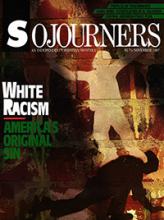WHEN IT COMES TO INTERRACIAL dialogues, Native People are often the last to be heard. We don't have the numbers. We don't have the economic or political muscle. When the subject is racism, we are never the first community of color to come to mind. And yet we have an absolutely fundamental experience that must be taken seriously.
Read the Full Article

Already a subscriber? Login
